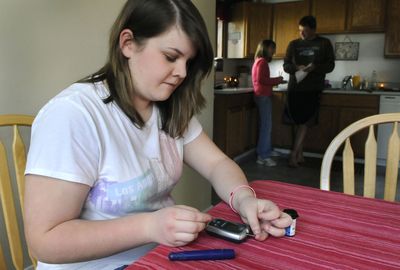Push is on to put medical records online
Northwest companies implement programs

Those who grew up in the pre-Internet world can remember having little access to their credit reports. Today, consumers easily can check and understand their credit scores online.
Similarly, access to health records has been shrouded in mystery. But Microsoft, Google and Inland Northwest Health Services in Spokane want to change that, putting people more in control of their medical histories and providing doctors with more accurate and current patient information.
Former House Speaker Newt Gingrich has been to Spokane twice in the past few years with his “paper kills” talks about why a paperless health care system would save lives and lower costs. Across the political aisle, the Obama administration plans to spend $19 billion on electronic medical records.
So what is an electronic medical record, or EMR, and why is it better than paper?
An EMR is a medical record in a digital format, created and consulted by the staff of a single health care organization. It’s what your doctor and his or her staff sees and uses.
Then there’s Electronic Health Record, or EHR, the term for records that are cumulative across multiple health organizations.
EMR and EHR tend to be used interchangeably, despite the small but important distinction between them.
The power of the paperless medical record is the accessibility it gives the patient and the seamless communication that can occur between doctors and other health care providers, such as pharmacies, specialists and physical therapists.
In an ideal EMR world, your family doctor would know about all the medications you take, not just the ones he or she prescribed. The patient also could add to this electronic record the vitamins and supplements he takes – information that could aid in the prevention of adverse drug interactions.
INHS has launched a pilot EMR project called 1HealthRecord ( www.1healthrecord.org) with patients from Rockwood Clinic, Heart Clinics Northwest and the Physicians Clinic. The pilot project, along with two others in Washington, received funding from the state health record bank.
INHS also has partnered with Google to use the Google Health Web site for storing patient-controlled health records, called Personal Health Records.The 1HealthRecord pilot is focused on medications and allergies. Once you sign up for Google Health and 1HealthRecord and authorize information sharing, anything your doctors prescribe will show up in your Google Health Personal Health Record. This is not a two-way street when it comes to information sharing. Anything you enter in Google Health, such as vitamins and over-the-counter drugs, is not transferred into the Electronic Medical Record in your doctor’s office. Google gives you an easy way to print them out so you can share that information with your doctor if you are part of the pilot. At any time you can turn off the information sharing as a consumer between Google Health and 1HealthRecord.
Former Spokane County Prosecutor Don Brockett, who sits on the 1HealthRecord patient advisory board, shared two experiences that convinced him of the effectiveness of electronic medical records. First is his allergy to the contrast dye used in various scans – not something that would always be at the top of a person’s mind in an emergency scenario. The second was a situation his wife encountered while out of town, when quick access to her medical records would have provided information that would have led to faster diagnosis of an allergic reaction to a prescription medication.
Another major player in PHR is Microsoft with HealthVault ( www.healthvault.com). Microsoft, like Google, has been partnering with major health providers. Microsoft’s Health Vault recently added the Mayo Clinic as a partner.
One thing that differentiates HealthVault from Google Health is that Microsoft has teamed up with major health hardware suppliers such as Omron, Bayer and LifeScan One Touch to bring data from their blood pressure, glucose meters, scales and other devices into HealthVault and the third party programs that run on top of HealthVault. This can make monitoring chronic conditions such as diabetes easier to share with doctors and more accurate. Plus, HealthVault lets people store information from fitness devices in the same manner for tracking overall wellness.
The HealthVault system gives users more control over what information they share and whom they share it with. You can give access to your blood pressure reads to your doctor and your spouse but keep other information between you and your doctor. Online medical records do raise privacy concerns, but Brockett said the risks are outweighed by the rewards of higher quality care and better awareness between doctor and patient.
Another concern is the value of using a PHR such as HealthVault or Google Health when your medical provider is not participating.
“Personal Health Records won’t be fully valuable until they are connected to the provider’s EMR, and they will always be lacking due to not having such information as labs reports and proper use of medical terms,” said Dr. Glen Stream, a member of the physicians board for1HealthRecord.
That the medical world is moving away from paper to patient-centric computer based solutions is a given. The details, as well as privacy and ethics, are still evolving.